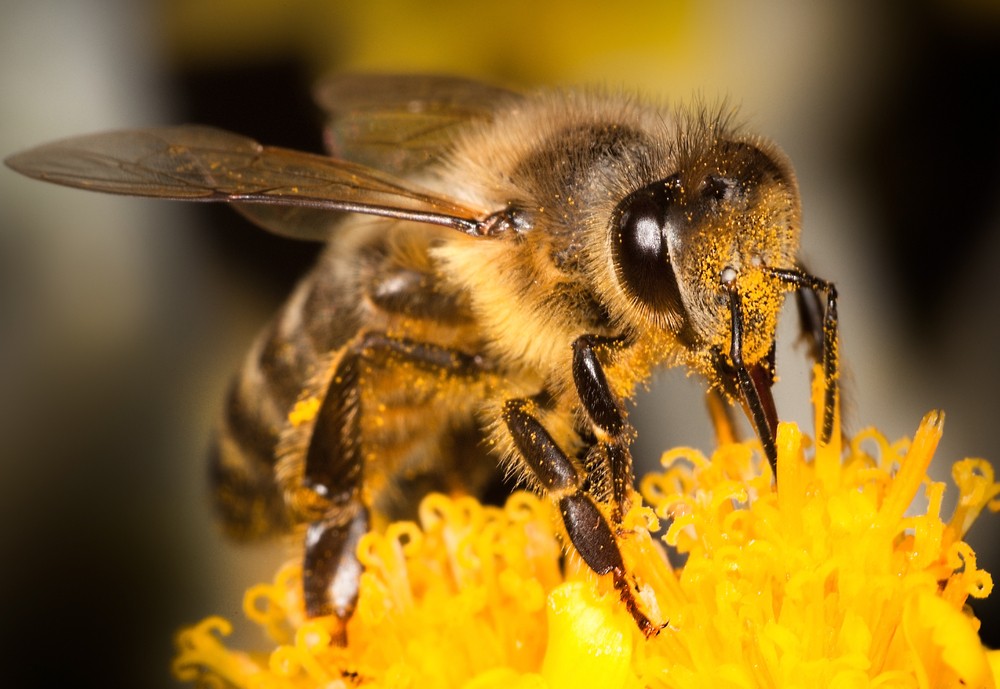Category: Stinging Insects
Honey Bee
Apis

Details
Size
Length: 3/4"
Width: 1/4"
Color Gray / Yellow
DIVERSITY 44
Summary
One of the most familiar insects in the world is the Honeybee. This member of the insect order Hymenoptera plays a key role in the human and natural world.
Honey is a thick liquid produced by certain types of bees from the nectar of flowers. While many species of insects consume nectar, honeybees refine and concentrate nectar to make honey. Indeed, they make lots of honey so they will have plenty of food for times when flower nectar is unavailable, such as winter.
Unlike most insects, honeybees remain active through the winter, consuming and metabolizing honey in order to keep from freezing to death.
Honeybees have a bright color pattern to warn potential predators that they have a weapon to defend themselves. Their weapon is a modified ovipositor (egg-laying tube). This is combined with a venom gland to create a stinger (formally known as an aculeus) located at the end of the abdomen. Because the stinger is modified from a structure found only in females, male bees cannot sting. When the hive is threatened, honeybees will swarm out and attack with their stingers to drive the enemy away.
Honeybees are social insects. In the wild, they create elaborate nests called hives containing up to 20,000 individuals during the summer months. (Domestic hives may have over 80,000 bees.) They work together in a highly structured social order. Each bee belongs to one of three specialized groups called castes. The different castes are: queens, drones and workers.
There is only one queen in a hive and her main purpose in life is to make more bees. She can lay over 1,500 eggs per day and will live two to eight years. She is larger (up to 20mm) and has a longer abdomen than the workers or drones. She has chewing mouthparts. Her stinger is curved with no barbs on it and she can use it many times.
Drones, since they are males, have no stinger. They live about eight weeks. Only a few hundred – at most – are ever present in the hive. Their sole function is to mate with a new queen, if one is produced in a given year. A drone’s eyes are noticeably bigger than those of the other castes. This helps them to spot the queens when they are on their nuptial flight. Any drones left at the end of the season are considered non-essential and will be driven out of the hive to die.
Worker bees do all the different tasks needed to maintain and operate the hive. They make up the vast majority of the hive’s occupants and they are all sterile females. When young, they are called house bees and work in the hive doing comb construction, brood rearing, tending the queen and drones, cleaning, temperature regulation and defending the hive. Older workers are called field bees. They forage outside the hive to gather nectar, pollen, water and certain sticky plant resins used in hive construction. Workers born early in the season will live about 6 weeks while those born in the fall will live until the following spring. Workers are about 12 mm long and highly specialized for what they do, with a structure called a pollen basket (or corbiculum) on each hind leg, an extra stomach for storing and transporting nectar or honey and four pairs of special glands that secrete beeswax on the underside of their abdomen. They have a straight, barbed stinger which can only be used once. It rips out of their abdomen after use, which kills the bee.

Causes Property
Damage

Inhabit Nearby
Foliage



































































